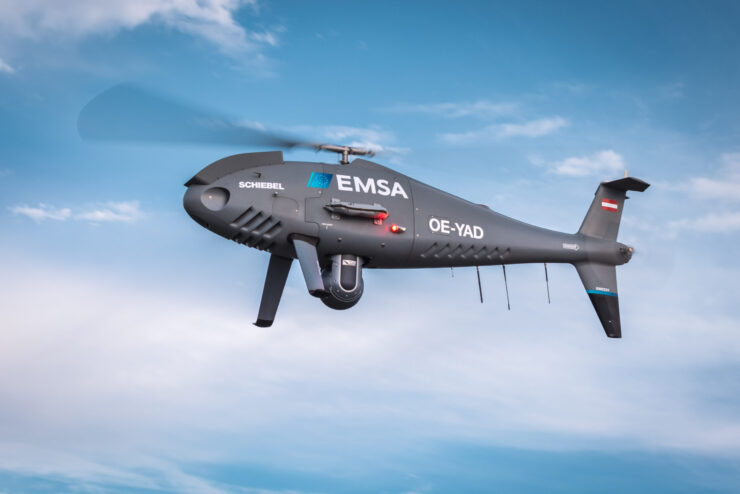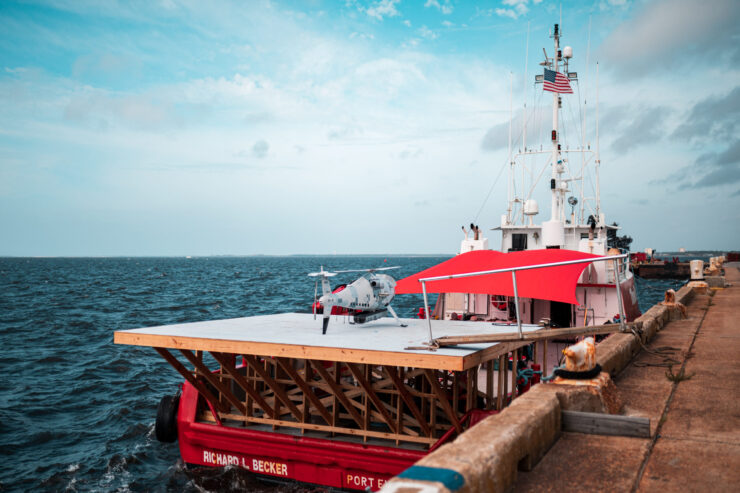We want to support and grow with the Indian industry by creating jobs and developing technology and offering the best Vertical Takeoff and Landing (VTOL) UAS available in the global market
-Neil Hunter, Global Head of Business Development, Schiebel
 The Schiebel Group, based in Vienna focuses on the development and production of high-tech VTOL Unmanned Air Systems. Schiebel’s CAMCOPTER S-100 is a market leader in its class. In a candid conversation with Raksha Anirveda, Neil Hunter, Global Head of Business Development at Schiebel spoke in detail about its India plan and global footprint. An excerpt:
The Schiebel Group, based in Vienna focuses on the development and production of high-tech VTOL Unmanned Air Systems. Schiebel’s CAMCOPTER S-100 is a market leader in its class. In a candid conversation with Raksha Anirveda, Neil Hunter, Global Head of Business Development at Schiebel spoke in detail about its India plan and global footprint. An excerpt:
RA: We are seeing Schiebel in India more frequently. Please give a brief glimpse of Schiebel and its experience in the VTOL domain?
NH: Schiebel operates across the globe and has been active in Asia for a number of years with a strong customer base. The company has strengthened its focus on the Indian market due to the large number of developing requirements for Unmanned Air Systems (UAS). With our CAMCOPTER® S-100, we are bidding for the Indian Navy’s Naval Ship-borne Unmanned Aerial System (NSUAS) Fast Track Programme that will deliver Intelligence, Surveillance and Reconnaissance (ISR) capability at sea. Being a mature and proven Vertical Take-off and Landing (VTOL) solution, we believe we have a very strong offering for the Indian Navy that meets all their requirements.
The UAS has gained extensive experience around the world over the last 15 years. The UAV has amassed several hundred thousand flight hours, with thousands of maritime flight hours under its belt and is being operated by 14 navies worldwide.
The S-100 is a multi-role, multi-domain UAS, which caters to the specialised needs of navies, armies and air forces alike. The payload-agnostic unmanned aircraft allows customers to add a robust and value for money “eye in the sky” to their existing capabilities, allowing for the provision of Intelligence, Surveillance and Intelligence (ISR), search and rescue, environmental protection, vessel detection and cargo delivery – just to name a few.
RA: Where are the current areas around the world / global market where Schiebel is now engaged with the Camcopter?
NH: Schiebel has customers on five (5 of the world’s continents; a mixture of military, governmental, NGO and commercial customers. Notably, over the last 3 years, Schiebel has won multiple contracts with the European Maritime Safety Agency (EMSA). In the execution of these contracts the S-100 provides simultaneous maritime surveillance services to several EU Member States and its coast guards, e.g. in Spain, Finland, Romania and Estonia.
In July 2021, the Royal Australian Navy (RAN) awarded Schiebel with a 3-year extension contract for the sustainment of its CAMCOPTER® S-100. The extension allows the RAN to continue to experiment and develop knowledge of the employment of UAS in the maritime domain, using the S-100.

Other current clients include the UK Coast Guard, Royal Thai Navy, French Navy and the Indonesian Navy. Building on its vast experience, Schiebel also recently demonstrated the S-100 to the Hellenic Navy and the US Navy this summer.
RA: As you know the UAV section in India is filled with major global players, hence what is your plan for the India Market and what do we expect from Schiebel in the recent future?
NH: Schiebel has been monitoring the Indian market for many years and has witnessed the extensive growth in UAS requirements – both military and commercial – that might benefit from the capabilities that VTOL UAS would bring.
A good example of this is the current Indian Navy NSUAS tender. However, Schiebel is also in discussion with the Coastguard for ISR and search and rescue roles, and the Army primarily for load lifting- a swell as Indian companies who are looking to utilise UAS in the oil and gas sector. There is also the emerging need for Manned Unmanned Teaming (MUM-T) – combining for example the capabilities of the manned MH-60Rs with the unmanned S-100.

Schiebel is also planning to participate in various tenders for tactical UAVs among the paramilitary forces. The long range and endurance of the S-100 make it suitable for project monitoring, urban surveillance and coastal monitoring requirements.
RA: All major global UAV players have set up shop / office here in India and are actively working towards a long term relationship with the Indian market under Atmanirbhar Bharat (Make in India) policy of the government. What are your plans since you do not have a presence in the country and how do plan to meet the Make in India requirement?
NH: Currently, Schiebel is being represented and supported by the well-established and successful Indian manufacturer VEM Technologies, which has developed a strategy to meet the ‘Made in India’ mandate. However, to ensure we meet future customer needs, we are in the process of setting up a local office and company in India to focus on long-term business in the region. We want to support and grow with the Indian industry by creating jobs and developing technology and offering the best Vertical Takeoff and Landing (VTOL) UAS available in the global market.








